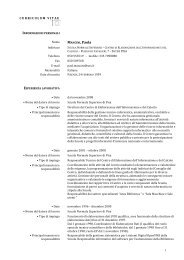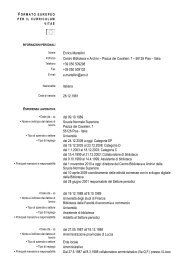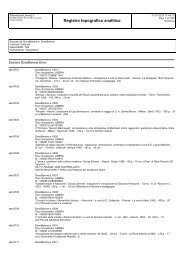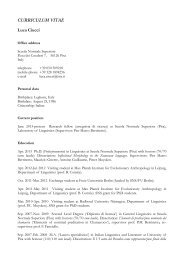Metrics of curves in shape optimization and analysis - Andrea Carlo ...
Metrics of curves in shape optimization and analysis - Andrea Carlo ...
Metrics of curves in shape optimization and analysis - Andrea Carlo ...
You also want an ePaper? Increase the reach of your titles
YUMPU automatically turns print PDFs into web optimized ePapers that Google loves.
65λ=0.01λ=0.04λ=0.08108λ=0.01λ=0.04λ=0.0846432201−20−0.5 0 0.5−4−0.5 0 0.5Figure 11: Plots <strong>of</strong> K λ (left) <strong>and</strong> ˜K λ (right) for various λ with L = 1. The plotsshow the kernels over one period.The kernels ˜K λ , K λ are known <strong>in</strong> closed form:˜K λ (s) = 1 L( ) s− L√ 2λLcoshK λ (s) =2L √ (λ s<strong>in</strong>h(12 √ λ1 + (s/L)2 − (s/L) + 1/62λ), for s ∈ [0, L], (10.10)<strong>and</strong> K λ , ˜K λ are periodically extended to all <strong>of</strong> lR. See Fig. 11.), s ∈ [0, L]. (10.11)The above idea extends to any j: it is possible to obta<strong>in</strong> ∇ H j E <strong>and</strong> ∇˜HjEfrom ∇ H 0E, by convolution. But there is also a way to compute ∇˜HjE withoutresolv<strong>in</strong>g to convolutions, see Prop. 10.10.The bad news is that, when <strong>shape</strong> <strong>optimization</strong> is implemented us<strong>in</strong>g a levelset method (as is usually the case), the curve must be traced out to computegradients. 19 This <strong>in</strong> particular leads to some problems when a curve undergoesa topological change, s<strong>in</strong>ce the Sobolev gradient depends on the global <strong>shape</strong> <strong>of</strong>the curve; but those problems are easily bypassed when the <strong>optimization</strong> energyis cont<strong>in</strong>uous across topological changes <strong>of</strong> the <strong>curves</strong>: see Sec. 5.1 <strong>in</strong> [55].10.3.1 Smooth<strong>in</strong>g <strong>of</strong> gradients, coarse-to-f<strong>in</strong>e flow<strong>in</strong>gIn Sundaramoorthi et al. [57] it was noted that the regulariz<strong>in</strong>g properties maybe expla<strong>in</strong>ed <strong>in</strong> the Fourier doma<strong>in</strong>: <strong>in</strong>deed, if we calculate Sobolev gradients∇ H j E <strong>of</strong> an arbitrary energy E <strong>in</strong> the frequency doma<strong>in</strong>, then̂∇ H j E(l) =̂∇ H 0E(l)1 + λ(2πl) 2j for l ∈ Z (10.12)19 Though, an alternate method that does not need the trac<strong>in</strong>g <strong>of</strong> the curve is described <strong>in</strong>Sec. 5.3 <strong>in</strong> [55] – but it was not successively used, s<strong>in</strong>ce it depends on some difficult-to-tuneparameters.65




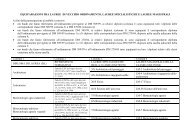
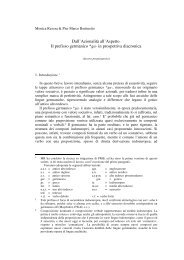
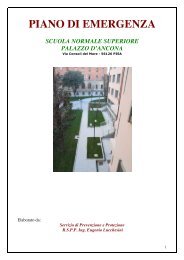
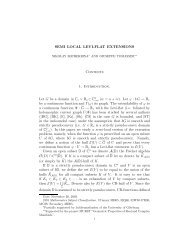
![4. Ghost [Å] vowels in French - Laboratorio di Linguistica](https://img.yumpu.com/49999334/1/184x260/4-ghost-a-vowels-in-french-laboratorio-di-linguistica.jpg?quality=85)



